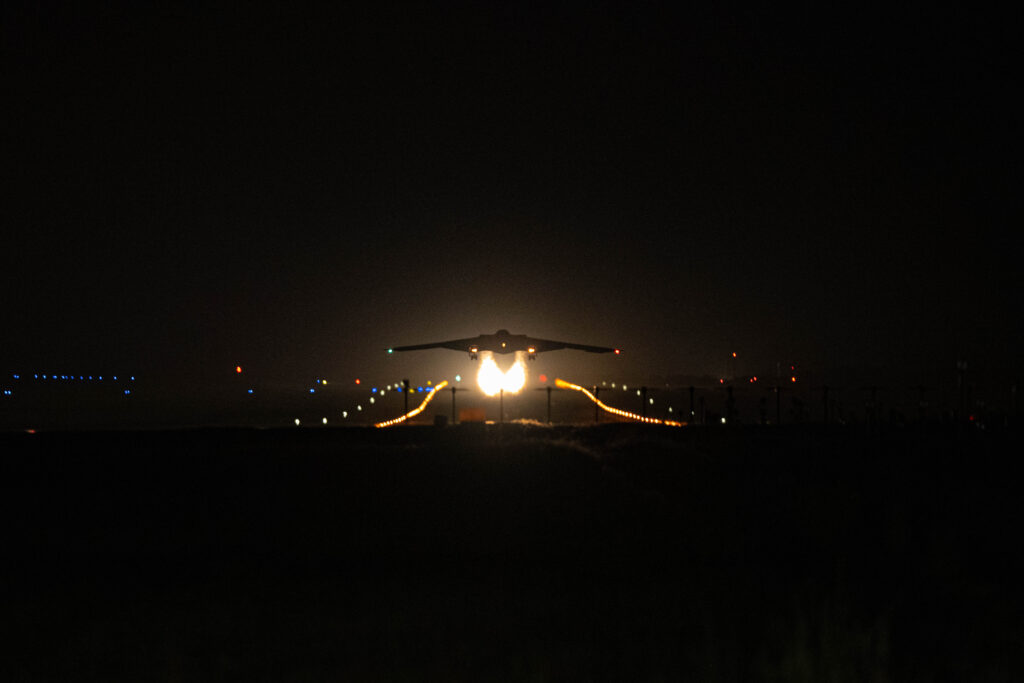Questions on the Fordo Strike (Wonky)

USAF photo
I have a number of questions about the overhead photos of the bombing at Fordo. I haven’t done a detailed photo analysis like this in a long time – probably back to the photos of what turned out to be a Syrian reactor under construction in 2007. And I’m not up to date on how the MOP bombs work, so these may be dumb questions. But I haven’t seen them asked or answered.
At the very least, perhaps this analysis will help people to understand how it’s done.
A number of news outlets report that the Defense Intelligence Agency (DIA) has assessed that the damage at Fordo was not extensive, not the obliteration that Donald Trump claims. Trump has been at odds with the intelligence agencies on a number of issues around the attack he ordered on Iran’s nuclear sites. I choose to believe the intelligence agencies over Trump’s vibes. But it is an early assessment and can change.
An overhead photo shows bomb damage at an entry point to the Fordo enrichment facility (lower holes) and at a ventilation shaft (upper holes). MOPs were dropped on Fordo, and these holes are probably their result. It’s reported that two MOPs were dropped for each hole, one after the other, to increase the destruction.
The DIA has more information than I do to interpret these photos, and probably additional photos. But one thing that can be noticed immediately is that there is no subsidence. Subsidence would indicate that the centrifuge halls had been collapsed. It is possible, however, that subsidence would not have reached the surface. We do not have positive evidence of subsidence, so it is not possible to say that the halls have been collapsed, but that result is not ruled out.
I had expected the MOPs to create a larger crater. Explosions generally extend their force in all directions, hence a crater. But these holes are very neat. They blew out some detritus – you can see fallout plumes to the right of the holes. Surprisingly little for such large bombs. The neatness of those holes suggest that they have some of the characteristics of shaped charges – to focus their force downward. That would be consistent with their bunker-busting purpose.
Geoff Brumfiel does some of the math to figure out the effects of the MOPs. The numbers indicate that Fordo is a tough target, and “It depends enormously on the kind of rock,” said Raymond Jeanloz, an expert in the field. My understanding is that we don’t know the geology of the site well, and Brumfiel’s calculations do not indicate an easy win, even for these big bombs.
Jeanloz observed that the bomb itself could be diverted by geologic layers, and that shockwaves are dissipated by rock. I’m also wondering if they could be redirected by horizontal layers above the centrifuge halls, just as, in a favorite Los Alamos story, an explosion at Two Mile Mesa one cloudy day blew the papers off Harold Agnew’s desk on the fourth floor of the Administration Building, maybe a mile away. The clouds channeled the shock wave. Could layers of rock do the same and protect the centrifuge halls?
I suspect that the DIA also has infrared satellite photography and perhaps radar scans that can give some idea of what lies below the surface, although the Fordo tunnels are deep enough that those techniques may not be useful.
These are actually questions rather than a comment. I am looking for answers from people who know how things work, not what someone saw in a video game or watched on YouTube.
Cross-posted to Nuclear Diner


